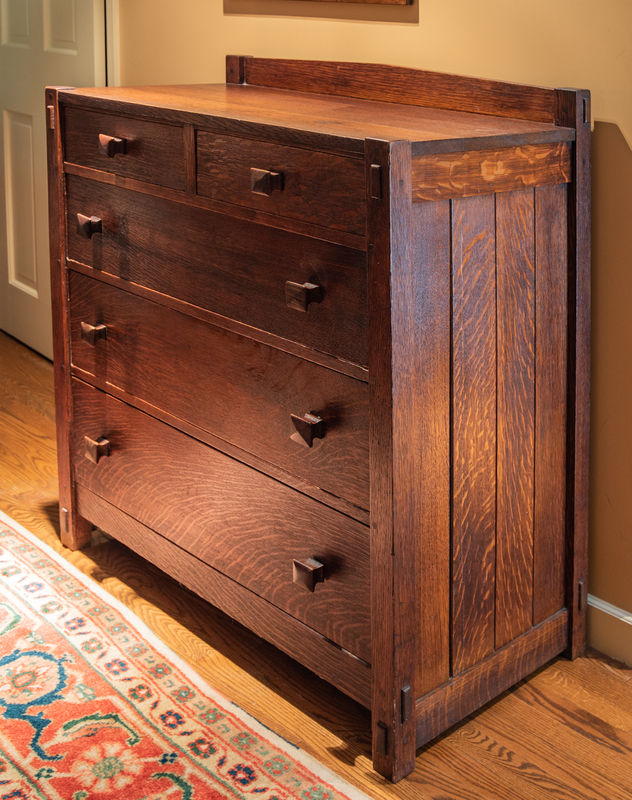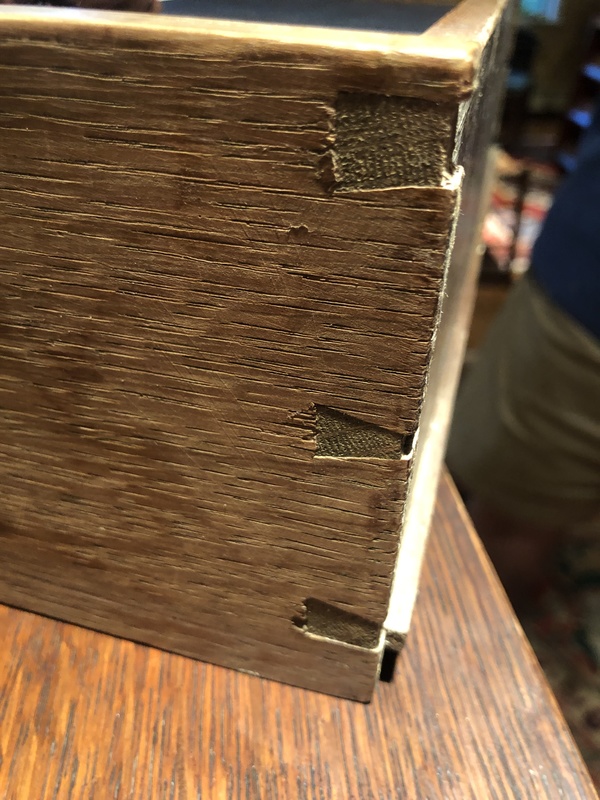Chest of Drawers (no. 626)
Item
Title
Chest of Drawers (no. 626)
Creator
United Crafts
Date
1902 (ca.)
Dimensions
48 x 40 x 20
Medium
Oak
Credit line
Collection of Drs. Cynthia and Timothy McGinn
Marks
Shop mark (decal) on back
Description
This Chest of Drawers is a smaller version of model no. 602 that was first published in Stickley's 1901 catalog, "Chips from the Workshops of the United Crafts." This model features the same construction details–bold through tenons, pyramidal wooden knobs, and splined sides–but was offered with five drawers instead of six.
The date of this Chest of Drawers is based on a number of factors, including the documented range for no. 626, which first appeared in the 1902 Retail Plates. The narrow-pinned, hand-cut dovetails are also indicative of work executed prior to Stickley's purchase of a Dodge dovetail machine, sometime in 1902. Like all of Stickley's early Arts and Crafts pieces, this dresser features no secondary woods as white oak is used throughout.
The execution of these dovetails–in particular the lack of scribed line on the side board and unevenness of the pins–suggests a cabinetmaker trained in Europe or by a European master, likely German. Unlike the English method of drawer making, in which the tails are laid out, scribed to depth and then cut, central European makers often cut the pins first–laying them out visually–and used them to cut the corresponding tails. Because the pins form an exact template for the tails, no scribe line along the visible edge of the drawer side is necessary.
The date of this Chest of Drawers is based on a number of factors, including the documented range for no. 626, which first appeared in the 1902 Retail Plates. The narrow-pinned, hand-cut dovetails are also indicative of work executed prior to Stickley's purchase of a Dodge dovetail machine, sometime in 1902. Like all of Stickley's early Arts and Crafts pieces, this dresser features no secondary woods as white oak is used throughout.
The execution of these dovetails–in particular the lack of scribed line on the side board and unevenness of the pins–suggests a cabinetmaker trained in Europe or by a European master, likely German. Unlike the English method of drawer making, in which the tails are laid out, scribed to depth and then cut, central European makers often cut the pins first–laying them out visually–and used them to cut the corresponding tails. Because the pins form an exact template for the tails, no scribe line along the visible edge of the drawer side is necessary.

